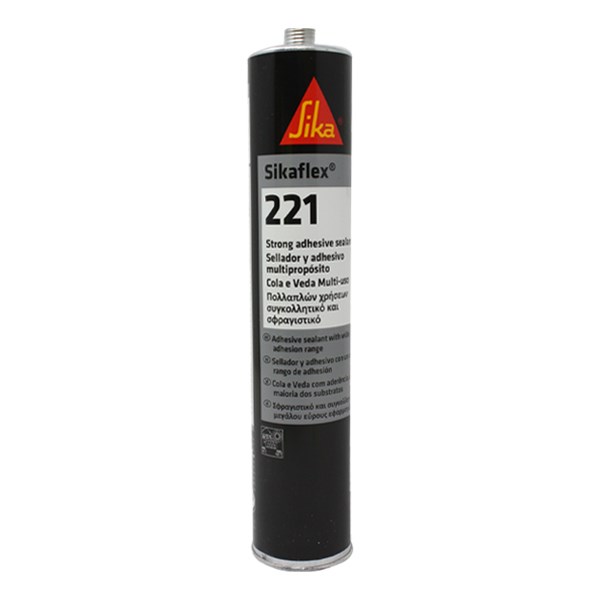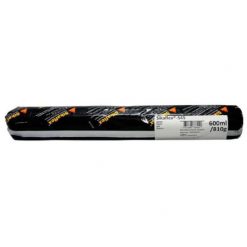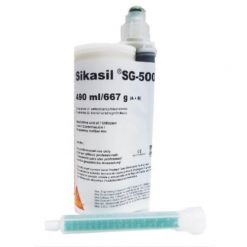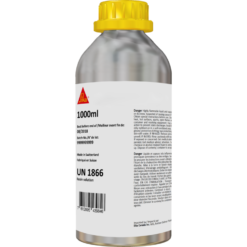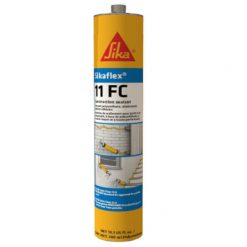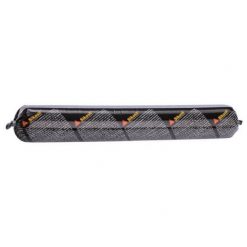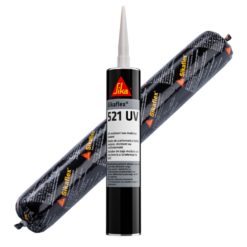Sikaflex 221 Black 300ml – (4393) 12pcs/box
£171.24 +VAT
- Bonds well to a wide variety of substrates
- Resistant to ageing
- Can be painted
Sikaflex 221 is a high-quality multi-purpose 1-component polyurethane adhesive / sealant that cures on exposure to atmospheric humidity. It is suitable for internal sealing and simple bonding applications.
SIKAFLEX 221 PRODUCT BENEFITS
- Bonds well to a wide variety of substrates
- Resistant to ageing
- Can be painted
- Can be sanded
- Non-corrosive
- Low odour
- NSF-approved for incidental food contact
SIKAFLEX 221 Usage
Sikaflex®-221 bonds well to a wide variety of substrates and is suitable for making permanent elastic seals of high adhesive strength. Suitable substrate materials are metals, metal primers and paint coatings (2-C systems), ceramic materials and plastics.
Seek manufacturer’s advice and perform tests on original substrates before using Sikaflex®-221 on materials prone to stress cracking. This product is suitable for experienced professional users only. Test with actual substrates and conditions have to be performed to ensure adhesion and material compatibility.
Packaging
| Cartridge | 12×300 ml |
Product Details
| Chemical base | 1-component polyurethane
|
|
| Colour (CQP001-1) | black | |
| Cure mechanism | Moisture-curing | |
| Density (uncured) | depending on color | 1.3 kg/l |
| Non-sag properties | Good | |
| Application temperature | ambient | 5 ─ 40 °C
|
| Skin time (CQP019-1) | 60 minutes A | |
| Open time (CQP526-1) | 45 minutes A
|
|
| Curing speed (CQP049-1) | (see diagram) | |
| Shrinkage (CQP014-1) | 5 % | |
| Shore A hardness (CQP023-1 / ISO 7619-1) | 40 | |
| Tensile strength (CQP036-1 / ISO 527) | 1.8 MPa | |
| Elongation at break (CQP036-1 / ISO 527) | 500 % | |
| Tear propagation resistance (CQP045-1 / ISO 34) | 7 N/mm | |
| Service temperature (CQP513-1) |
24 hours 1 hour
|
-50 ─ 90 °C
120 °C 140 °C
|
| Shelf life (CQP016-1) | 12 months B |
| CQP = Corporate Quality Procedure | A) 23 °C / 50 % r.h. | B) storage below 25 °C |
Surface Preparation
Surfaces must be clean, dry and free from grease, oil and dust.
Surface treatment depends on the specific nature of the substrates and is crucial for a long lasting bond. Suggestions for surface preparation may be found on the current edition of the appropriate Sika® Pre-Treatment Chart. Consider that these suggestions are based on experience and have in any case to be verified by tests on original substrates.
Application
Sikaflex®-221 can be processed between 5 °C and 40 °C but changes in reactivity and application properties have to be considered. The optimum temperature for substrate and sealant is between 15 °C and 25 °C.
Sikaflex®-221 can be processed with hand, pneumatic or electric driven piston guns as well as pump equipment. For advice on selecting and setting up a suitable pump system, contact the System Engineering Department of Sika Industry.
Tooling and finishing
Tooling and finishing must be carried out within the skin time of the sealant. It is recommended using Sika® Tooling Agent N. Other finishing agents must be tested for suitability and compatibility prior the use.
Removal
Uncured Sikaflex®-221 can be removed from tools and equipment with Sika® Remover-208 or another suitable solvent. Once cured, the material can only be removed mechanically. Hands and exposed skin have to be washed immediately using hand wipes such as Sika® Cleaner-350H or a suitable industrial hand cleaner and water. Do not use solvents on skin!
Overpainting
Sikaflex®-221 can be best painted after formation of a skin. Painting could be improved by treating the joint surface with Sika® Aktivator-100 or Sika® Aktivator-205 prior to paint process. If the paint requires a baking process (> 80 °C), best performance is achieved by allowing the sealant to fully cure first. All paints have to be tested by carrying preliminary trials under manufacturing conditions.
The elasticity of paints is usually lower than that of sealants. This could lead to cracking of the paint in the joint area.
Documents
Related products
Sika Products
Sika Products
Sika Products
Sika Products
Sika Products
Sika Products
Sika Products
Sika Products

